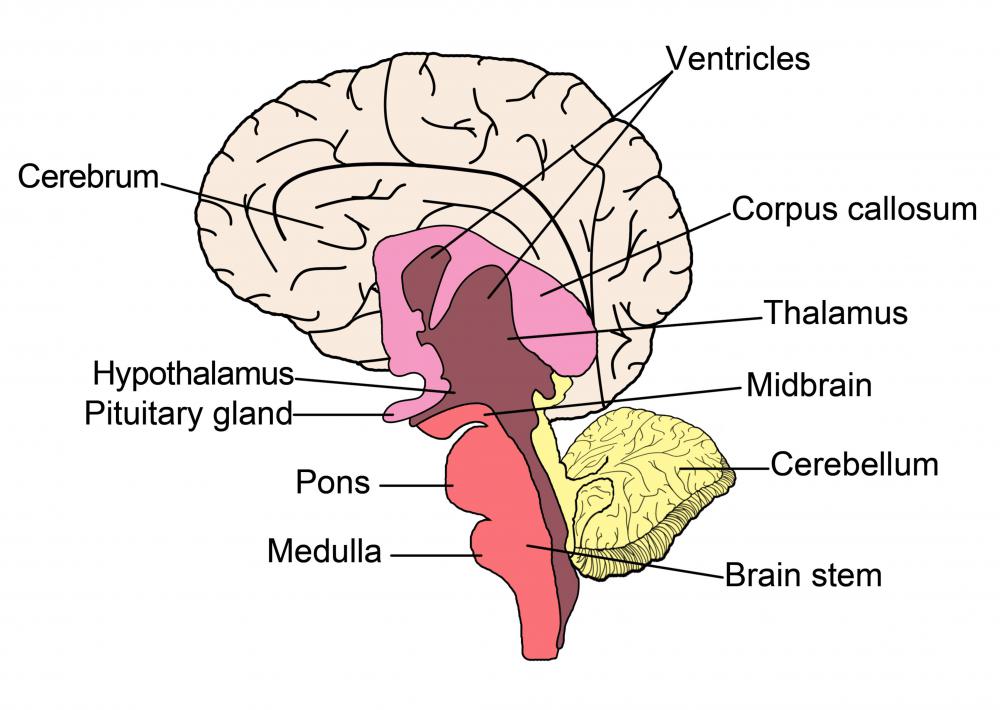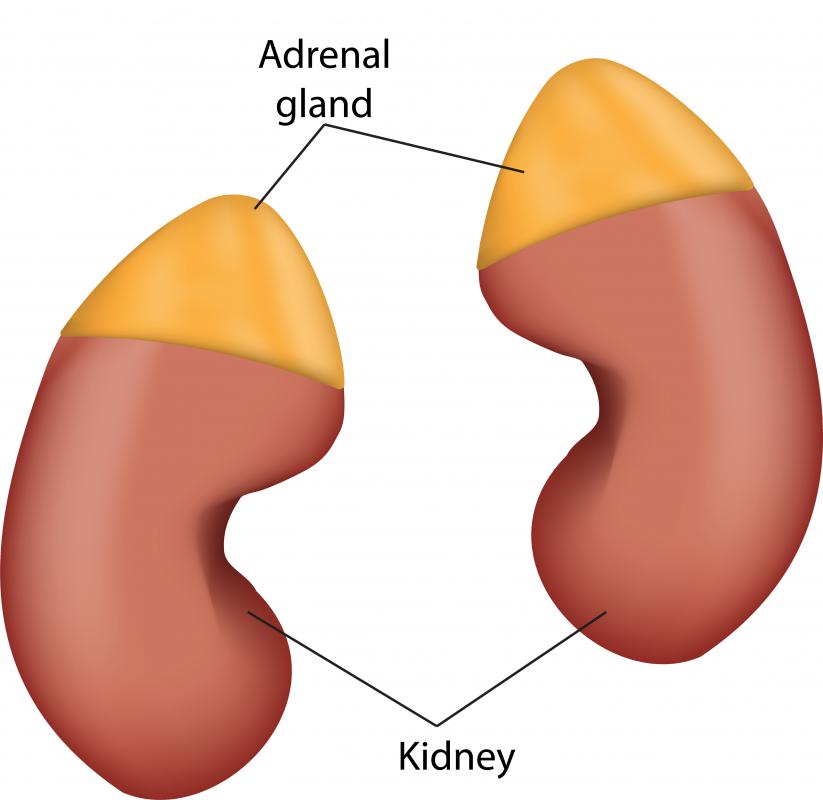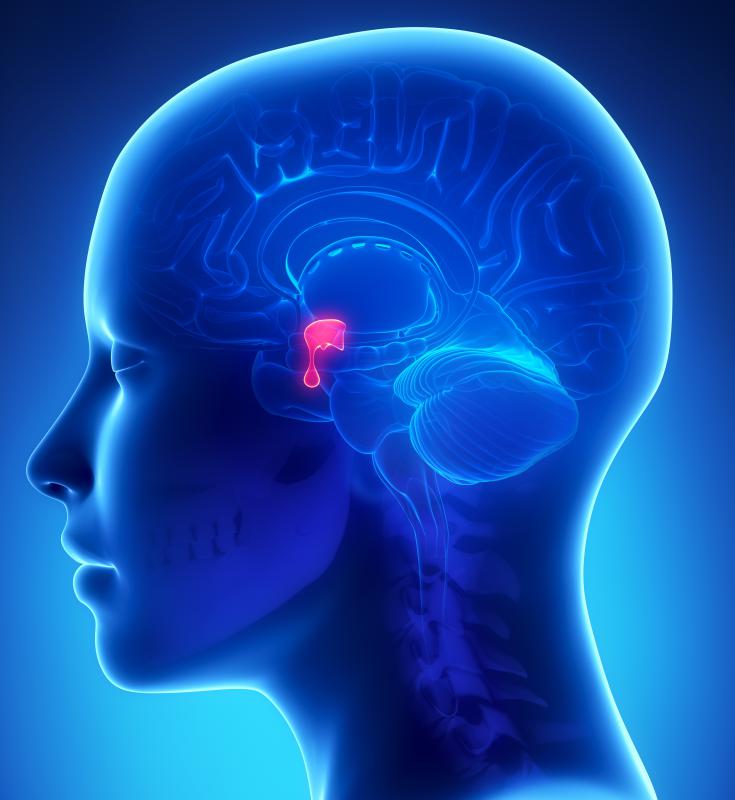At WiseGEEK, we're committed to delivering accurate, trustworthy information. Our expert-authored content is rigorously fact-checked and sourced from credible authorities. Discover how we uphold the highest standards in providing you with reliable knowledge.
What Is the Location of the Pituitary Gland?
The pituitary gland sits at back of the brain, directly behind the nose between optic nerves. This pea-sized gland rests in a small pocket of bone called the pituitary fossa, and dangles from a thin thread connected to the hypothalamus, a minute part of the brain responsible for controlling numerous bodily functions. The location of the pituitary gland fiber acts as a pathway for nerves and blood vessels that carry messages from the brain to release hormones throughout the body.
Often called the master gland, the location of the pituitary gland allows it to receive brain signals before sending messages to other glands in the human body. It acts as a switch to regulate hormone production based on the external environment and a host of internal functions. The pituitary gland consists of a larger front portion and a smaller rear portion, with each section responsible for specific hormones.

Hormones that regulate the thyroid are secreted via the front part of the pituitary gland. These substances control metabolism and growth, and affect many organs in the body. This area also regulates the production of cortisol in the adrenal glands. Cortisol tells the body to metabolize fats, proteins, and carbohydrates, and to control blood pressure.

The location of the pituitary gland's frontal section sends signals to produce sex hormones. Estrogen, the female sex hormone, governs ovulation, menstruation, and reproductive functions. Testosterone, the male sex hormone in the testes, produces sperm, facial hair, and other male traits. Melanin, a substance that controls pigment in skin, represents another substance controlled from the anterior location of the pituitary gland.

The rear section of the pituitary gland releases the hormone oxytocin, which directs uterine contractions for childbirth. It also releases milk during breastfeeding. This section of the gland produces an antidiuretic hormone that instructs the kidneys to send excess water into the bloodstream, reducing the amount of urine produced.
Dysfunction of this complex system of messages might lead to serious health issues, especially in hormones affecting the thyroid, adrenal glands, or kidneys. Most pituitary gland problems are linked to tumors from abnormal cell growth, but malignant tumors of the gland are considered rare. Brain injury, radiation to the head, and infection might also create imbalances in hormone production.

Disorders linked to pituitary function include diabetes, heart disease, impotence, and infertility. High or low blood pressure might also occur, along with eating disorders, including obesity, anorexia, and bulimia. Menstrual problems and osteoporosis represent two other conditions that might indicate hormonal imbalances.
Symptoms of pituitary problems vary, depending upon which hormones are involved. Depression and mood disorders might be accompanied by headache and abnormal blood pressure. Some patients feel tired or weak, and may lose weight. Sleeping too much or the inability to sleep might also indicate problems with this gland.
AS FEATURED ON:
AS FEATURED ON:
















Discuss this Article
Post your comments